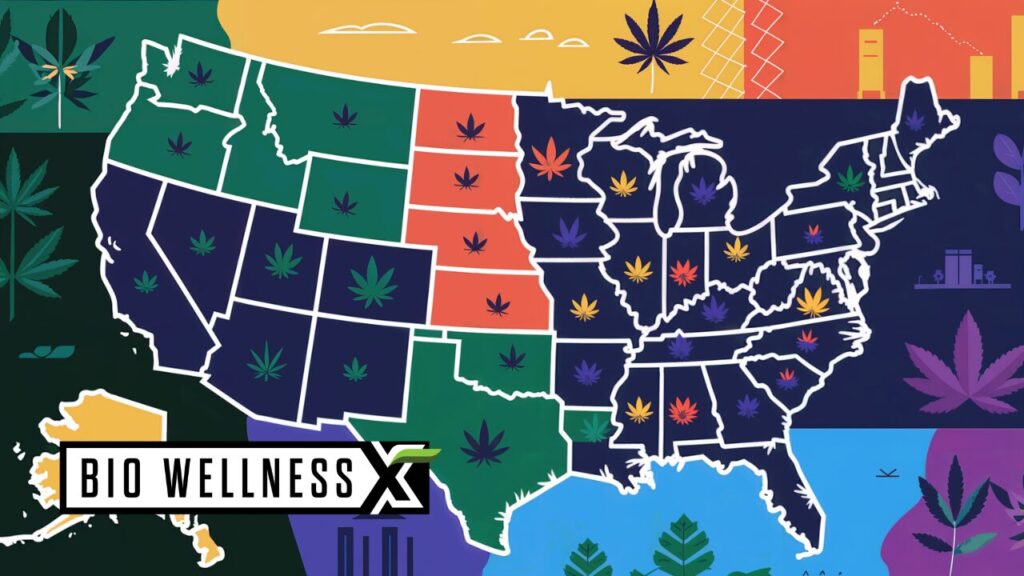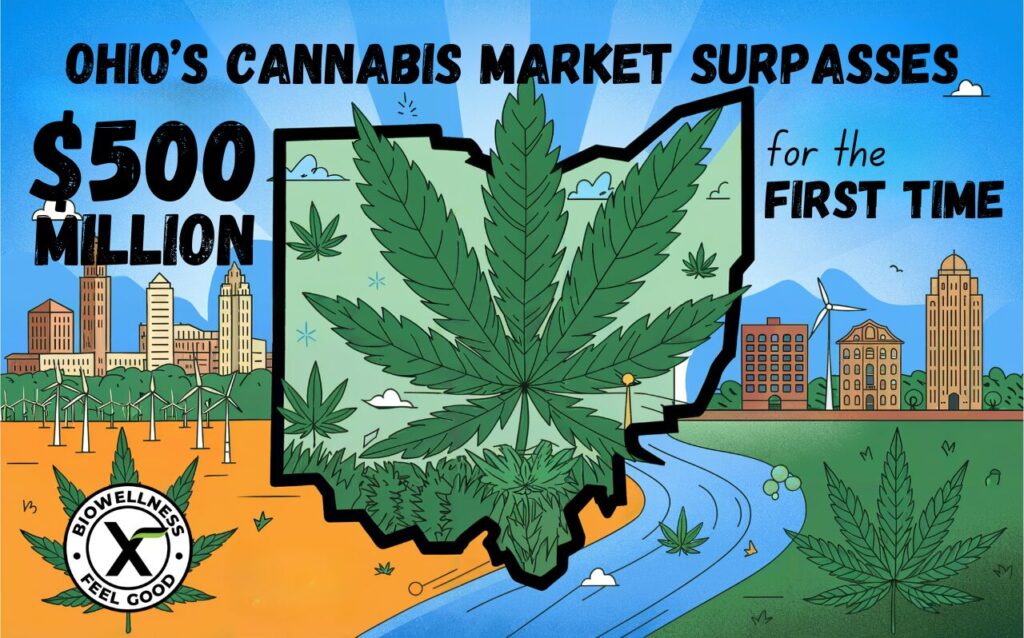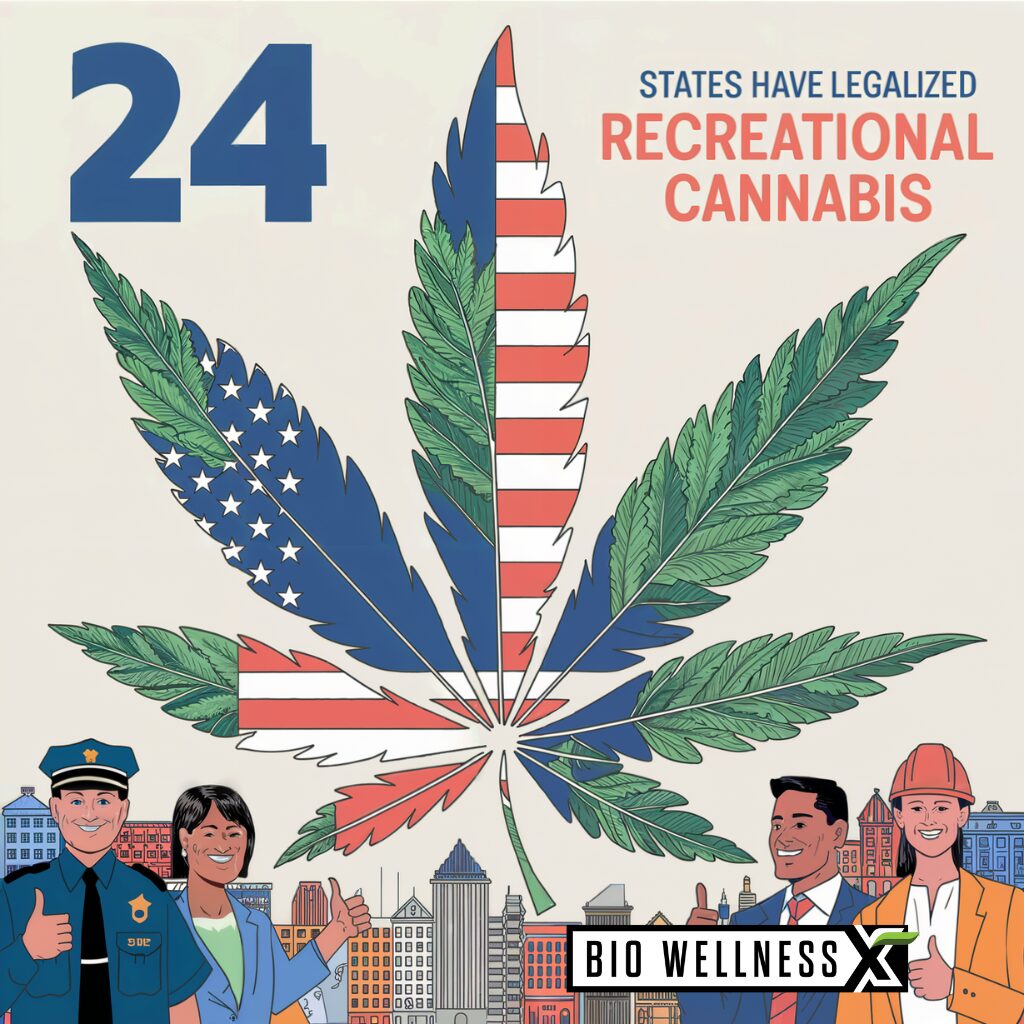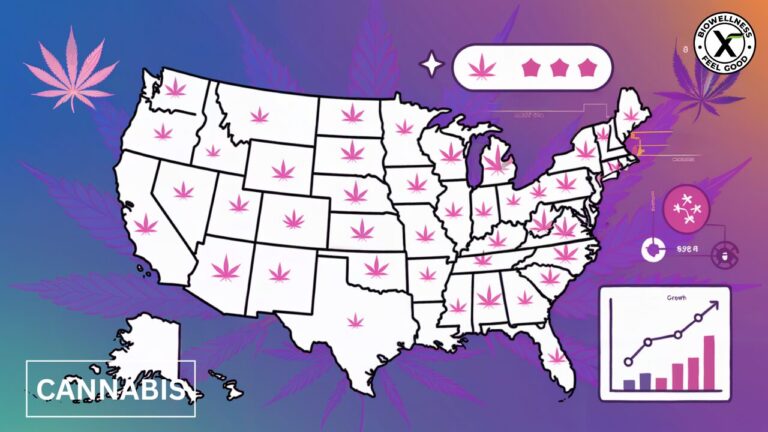key points
With unprecedented growth in both medical and recreational cannabis, as well as cannabis-friendly hemp laws, the U.S. cannabis industry is gaining speed at breakneck pace. With new legalizations across the country, there are some states that stand out as relatively more dominant than others, thus providing quite the opportunity for cannabis retailers.
Let’s look at the fastest-growing cannabis states in 2024 and early 2025, probe what’s behind the success, and what its wider implications are for the industry.
Which 4 US States Are Leading the Way in Cannabis Adoption?

Maryland: Leading the Charge in Growth
Maryland has cemented itself as one of the fastest-growing cannabis markets in the United States. As of 2024 year-to-date, the state had a YTD sales growth of 57.8% and sat at $942.2 million in total sales. Some of the major factors of this rise include the legalization of adult-use cannabis sales in July 2023, which greatly opened up the consumer base, and the state’s friendly stance on hemp-derived cannabis – including THCa, Delta-8 and more. Previously, medical cannabis was only allowed in Maryland, but this shift to the recreational market has seen a gigantic surge in sales.
Furthermore, the proximity of Maryland to the Northeastern states of states that range from zero to full legalization of cannabis has boosted tourism for cannabis in Maryland, therefore the growth of the market.

Ohio: Strong Medical Market Growth
Ohio launched its recreational cannabis sales on August 6 2024, which was the only new state market for the year. Although its recreational sales reportedly topped US$131 million in less than three months, its medical-only market has also shown gradual and significant growth. In 2024, Ohio saw a 30.9% increase in YTD sales reaching at $522.6 million. The growth is attributed to the expanding patient base that prefers to use medical cannabis, new categories of products, and even easier dispensary licensing.
Due to a well-planned regulatory environment in Ohio, quality and safety for the product has been guaranteed, thereby feeding the cannabis market. The universities and private entities are interested in research and development to survey the therapeutic benefits of medical cannabis.
New Jersey: Growing Adult-Use Market
Since the state rolled out adult-use sales in April 2022, New Jersey’s cannabis market has gained so much traction. Sales have been rising to $805.7 million with a YTD increase of 24.6% as of 2024, and it is an essential state for the Northeast cannabis industry because it sits centrally and is filled with people.
Retail outlets expansions have become a dominant driver in New Jersey. More dispensaries across the state emerged, which was made accessible for consumers. What’s more is that there has been diverse products such as hemp-derived THC with friendlier federal laws, including edibles, concentrates, and even infused beverages; hence new markets have emerged by attracting new clients who otherwise could not consider such use.
Missouri: A Rising Star in the Midwest
As the industry gained good speed in Missouri, it reported a 4.9% month-to-month sales increase to around $123.3 million in 2024. Low barriers to entry and business-friendly regulations had always remained a highly attractive proposition for cannabis entrepreneurs.
However, most impressive thing about Missouri is that it not only implemented its medical cannabis program successfully but, in reality, really saw exponential growth in dispensaries and cultivation centers. The state also made sure small businesses get licenses, which is a diversified and competitive marketplace.
Sales have been further boosted by the year end, with recreational cannabis being legalized. As more and more legal cannabis is accepted, Missouri will be bound to continue its growth pace in the coming years.
States Facing Challenges in Market Growth
While some states are witnessing rapid growth, others are suffering due to market saturation, regulatory hurdles, and economic factors.
Arizona: The once-thriving market, Arizona, is now down by 12.9% YTD sales and has reached $989.8 million in 2024. According to industry experts, this decline is caused by growing competition and price compression.
Colorado: This state is famously the first and oldest legal cannabis market in the U.S. In 2024, cannabis sales declined by 9.5% to $1.18 billion. It experienced a mature market where sales are being driven down due to low prices and neighboring states’ competition.
California: The largest cannabis market in the country, California has suffered a 3.6% decline in YTD sales to $4.16 billion. Though this state faces high taxation, overregulation, and a surviving illicit market undercutting its own legal market, California still remains one of the most popular cannabis states in the union.
Key Trends Driving Cannabis Growth in the U.S.

1. Legislative and Regulatory Changes
The most important, of course, is the decision of the DEA in April 2024 to reschedule cannabis from Schedule I to Schedule III of the Controlled Substances Act. This will bring much-needed ease in banking, avoid some tax burdens under IRS Code 280E, and unlock research and investment opportunities.
Additionally, states continue to take the lead in cannabis policy. In 2024:
- A historic shift in policy occurred in Nebraska as voters legalized medical cannabis.
- Recreational cannabis measures appeared on the ballots of Florida, North Dakota, and South Dakota, but voters rejected them.
- Farm Bill Loophole Boosts Sales – The 2018 Farm Bill allows hemp-derived THC, like Delta-8 and THCa, to be sold legally, fueling market expansion.
- Varying state laws and federal gray areas enable hemp-derived THC products to thrive, despite ongoing debates over legality and regulation.
2. Increased Investment and Market Expansion
The possibility of federal cannabis reform has seen private equity and venture capital firms re-engage with the industry. By the year end, there is increased investment in cannabis businesses, focusing on expansion opportunities, product innovation, and technology integration.
M&A activity is also expected to increase as companies look to consolidate market share and improve operational efficiencies.
3. Product Innovation and Consumer Trends
The cannabis industry is experiencing product diversification for a wider segment of consumers. Trends include:
- THC-infused beverages, as an alternative to alcohol.
- High-potency concentrates and edibles for the experienced consumer.
- Microdosing products that offer mild controlled effects.
- CBD and wellness-oriented cannabis for health-conscious consumers.
- The tourism in cannabis is developing as a profitable segment, where states like California, Nevada, and Colorado are attracting visitors seeking legal cannabis experiences.
Western vs. Eastern Cannabis Markets: January 2025 Performance
The performance of the U.S. cannabis market remains mixed across different regions. By January 2025, the western markets were mixed bag results, but the eastern markets had seen tremendous improvement in some states.
Western Markets Overview
Western states included Arizona, California, Colorado, Nevada, and Oregon. There were mixed growth and decline signals from these states. While Nevada had a year-over-year growth of 6.5% in sales, the other states faced headwinds. The largest cannabis market in the United States, California, reported a 11.6% year-over-year drop in annual sales, which indicates some regulatory and price competition-related headwinds. Growth in these states fell sequentially, except for Nevada, which seems stable.
Eastern Markets Surge
The eastern cannabis market was also seen to be growing more dynamically through January 2025. States like Illinois, Maryland, Michigan, and Missouri all showed steady growth, while Ohio, almost coming out of nowhere, skyrocketed at 68.4% year over year since adult-use cannabis launched in August 2024. Florida and Pennsylvania are operating as medical-only markets but Florida’s market was seen slowing early due to competitive pressures despite a rise in dispensary openings and unit volume sales.
New York’s adult-use market remains out of these reports, although anecdotal evidence suggests a very booming market after significant regulatory improvements. The data shows that new recreational markets are driving the most significant growth-Ohio and Missouri, for example-and that older markets are struggling with growing pains and increased competition.
Final Thoughts: The Future of U.S. Cannabis
These trends in the US cannabis industry during 2024 and into early 2025 represent a monumental swing toward acceptance and normalization. Federal legalization efforts are gaining steam, while state-level expansion continues unchecked and research accelerates, all of which ensure an upward trajectory for the industry.
Still, stakeholders must prepare for the looming challenges that will arise with regulatory changes, market saturation in mature states, and competition from both legal and illicit operators.
Over time, the landscape of cannabis will change, and the business, investor, and policy worlds will need to adapt to new opportunities and challenges. Within the next few years, it will become critical to see whether the industry lives up to its full potential or falls back because of changes in political and economic conditions.

Legal Disclaimer:
By reading this information presented, you agree to release the author of any liability that comes from using this data. This post contains no legal advice. Claims about cannabinoids have not yet been approved by the FDA. Read the full legal disclaimer here.
More Articles About Cannabis:
- What Is THCA Cannabinoid? A Beginners Guide!
- Understanding THCA Drug Tests and How to Avoid Failing
- THCA VS Delta-8 THC! What Are The Differences?
- Where to Buy Wholesale High THCa Flower
- How to Find the Best THCa Flower Online
- Bulk THCa: Buying THCa Flower By The Pound
References:
- https://www.statista.com/statistics/1060110/us-share-of-legal-cannabis-by-state/
- https://www.marketwatch.com/story/new-yorks-pot-business-on-track-to-join-1-billion-legal-state-sales-club-19708dc5
- https://www.dea.gov/stories/2024/2024-11/2024-11-26/dea-hold-hearing-rescheduling-marijuana
- https://www.statista.com/statistics/1060110/us-share-of-legal-cannabis-by-state/
- https://investingnews.com/daily/cannabis-investing/cannabis-market-update







